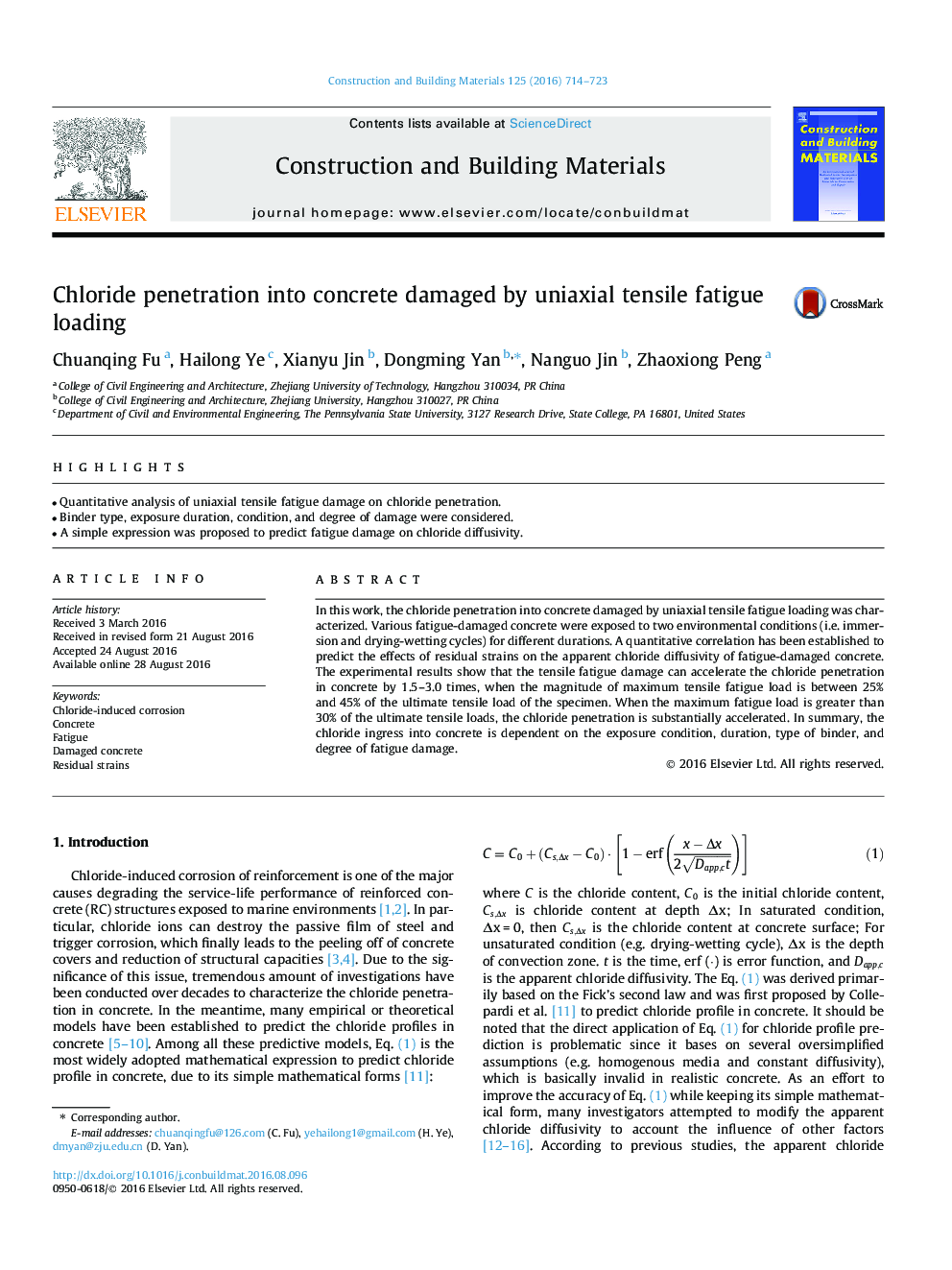| Article ID | Journal | Published Year | Pages | File Type |
|---|---|---|---|---|
| 4918658 | Construction and Building Materials | 2016 | 10 Pages |
Abstract
In this work, the chloride penetration into concrete damaged by uniaxial tensile fatigue loading was characterized. Various fatigue-damaged concrete were exposed to two environmental conditions (i.e. immersion and drying-wetting cycles) for different durations. A quantitative correlation has been established to predict the effects of residual strains on the apparent chloride diffusivity of fatigue-damaged concrete. The experimental results show that the tensile fatigue damage can accelerate the chloride penetration in concrete by 1.5-3.0 times, when the magnitude of maximum tensile fatigue load is between 25% and 45% of the ultimate tensile load of the specimen. When the maximum fatigue load is greater than 30% of the ultimate tensile loads, the chloride penetration is substantially accelerated. In summary, the chloride ingress into concrete is dependent on the exposure condition, duration, type of binder, and degree of fatigue damage.
Related Topics
Physical Sciences and Engineering
Engineering
Civil and Structural Engineering
Authors
Chuanqing Fu, Hailong Ye, Xianyu Jin, Dongming Yan, Nanguo Jin, Zhaoxiong Peng,
